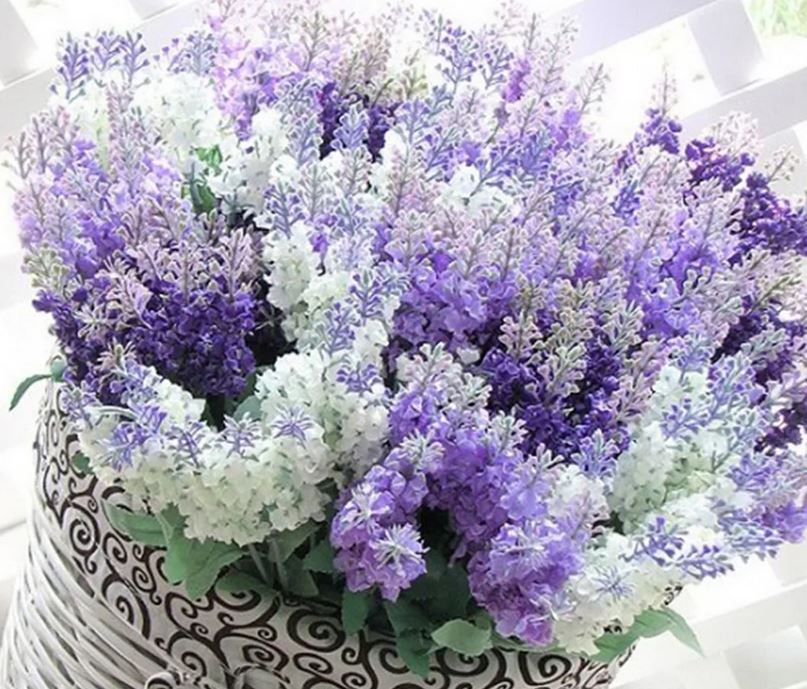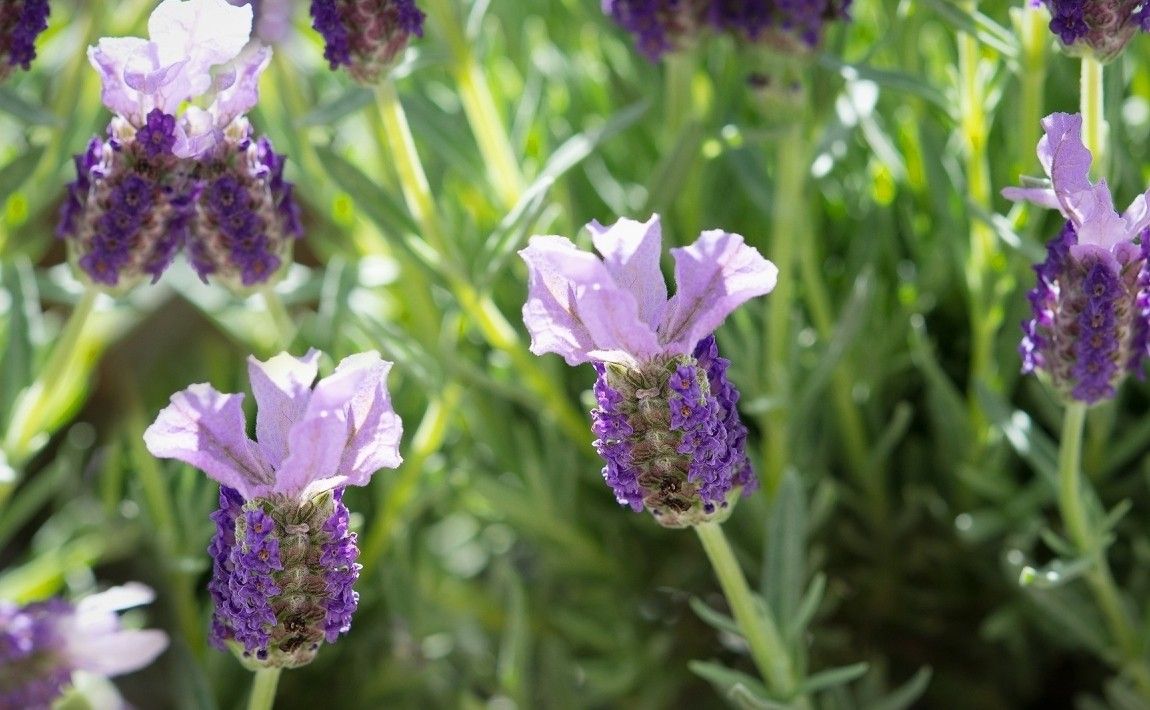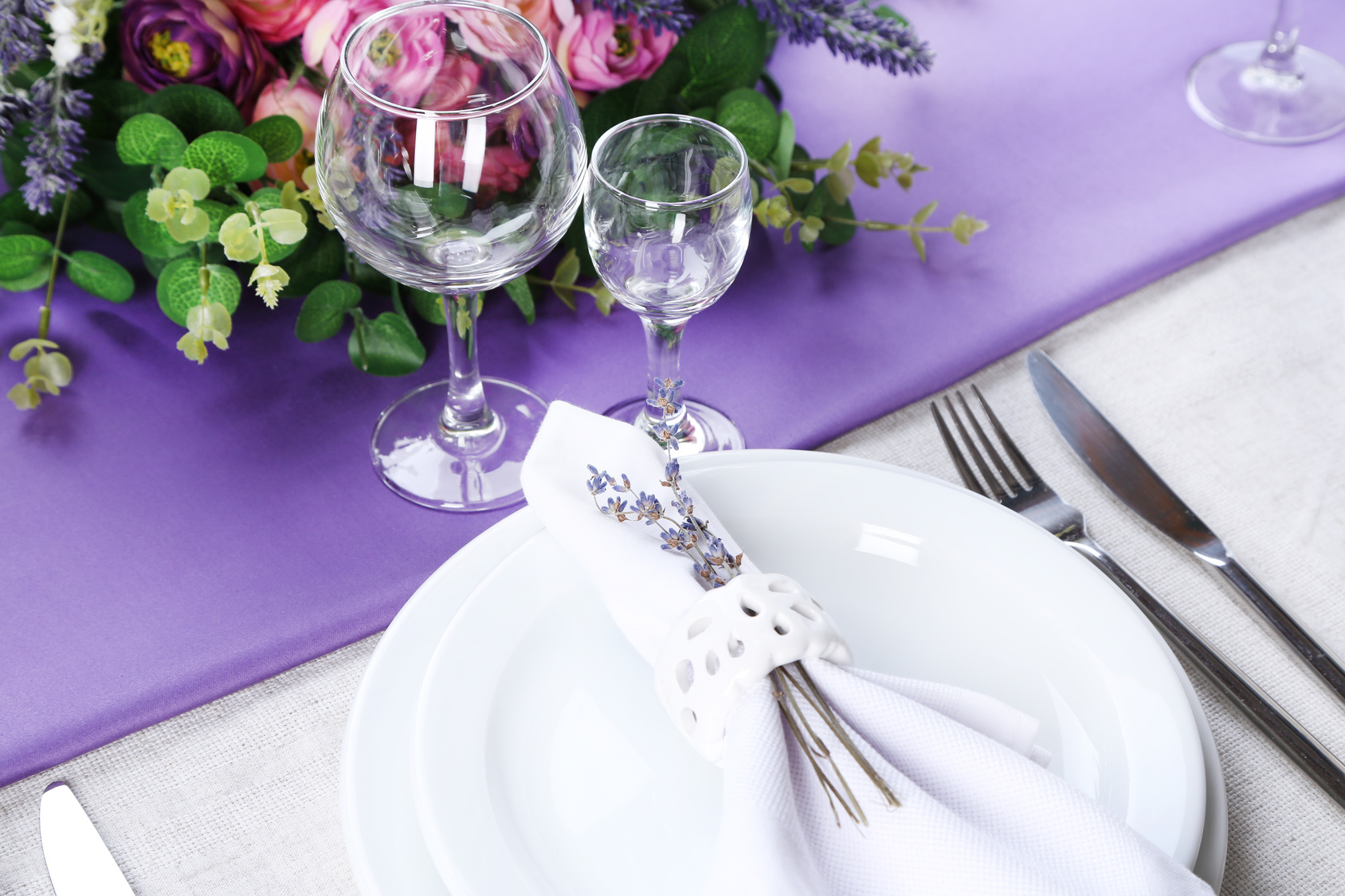What Lavender looks like
Content:
Lavender is a herbaceous refined perennial. The plant is a flowering bushes. It adores the sun, but grows and reproduces well in many parts of the world. Lavender flowers are planted as an element of an alpine slide, a rocky garden, a miniature hedge. The plant has medicinal properties, it is used in cooking and interior decoration. There are many interesting facts about perennial varieties. Ornamental shrubs are in great demand, both among ordinary gardeners and landscape designers.
Flower history
The first mention of the plant dates back to the times of Ancient Rome. The Romans added inflorescences to the water with which they washed. Even then, people knew that grass purifies water. It is no coincidence that the name of the plant contains the word "lava".
It meant "cleanliness, washing."
About the plant
Herbaceous perennial is eye-catching with its rich flowering. Flowers can be purple, cornflower blue, pink. Another reason why gardeners love the shrub is its sophisticated scent. Many people know how lavender smells. Today, the plant is also grown for industrial purposes, including for adding to perfumery. The scent of lavender is delicate, fragrant. Despite the sultry summer aftertaste, you can feel the cooling notes in it.
Characteristics
What does lavender look like? Among the characteristics of a spectacular culture are the following:
- shrub evergreen and lush;
- the height of different varieties ranges from 15 to 95 cm;
- the rhizome is powerful, goes into the ground by 150-220 cm;
- stems are branched, mostly erect;
- each shoot is covered with a bloom resembling felt;
- the base of the bush gradually grows stiff;
- foliage is numerous, leaves are small, lanceolate;
- the color of the foliage is emerald-silver, it can be green with a bluish tint, there is also a variegated shrub;
- flowering lasts from 20 to 40 days, mainly begins in June;
- what a lavender flower looks like - small flowers have an irregular shape, they are collected in spikelets and are located in the upper part of the bush.
Family
Lavender is a member of the Lamiaceae family. Another name for the family is Lipoids. It combines many of the famous herbs used as condiments. For example:
- ü mint;
- ü lemon balm;
- ü oregano;
- ü basil;
- ü rosemary, etc.
The family includes representatives that resemble lavender in appearance. Flowers similar to lavender in external description:
- ü hyssop;
- ü meadow sage;
- ü catnip;
- ü plectrantus.
In the wild, purple shrubs can be found in southern Europe, the Canary Islands, Africa, Australia and the Mediterranean Sea.
Perennial varieties
There are several dozen plant species. Each variety has its own characteristics. The most popular types of lavender are:
- mountain;
- variegated;
- dwarf;
- decorative;
- French;
- narrow-leaved.
Mountain
This is wild lavender. It grows mainly in mountainous areas - in meadows adjacent to mountainous areas. Unpretentious, but loves warmth and sunny open spaces. The mountain lavender plant has chosen the territory of the Crimean peninsula. Bushes 50-80 cm high have erect stems.
The color of the petals is lilac, gray-blue. Meadow shrub has flowers, collected in inflorescences of 8 pieces in the form of apical spikelets.
Variegated
Another name is variegated. The plant has an unusual color of petals. The main color is light green. Beige stripes are present, predominantly along the edges of the foliage.
The species prefers to grow in areas where it is summer all year round.
Dwarf
The dwarf species is a semi-shrub. Its height does not exceed 14-35 cm. On the basis of this species, a large number of different varieties have been bred. For example, there is the white variety Nana Alba and the Little Lottie variety, whose inflorescences have a pleasant light pink color. Among the dwarfs, the Mansted variety stands out. It can only bloom with cornflower blue flowers with a purple tint.
Decorative
Ornamental lavender is a type of plant that feels great next to a person. She decorates the territory, but only in warm countries or in an apartment. Does not tolerate a drop in temperature. It is added to dishes and tea.
She has a special persistent scent. Toothed lavender is a decorative species.
French
This species is also afraid of the cold. Cultivated in the south. Has wide sheet plates. Because of this, it is called broadleaf.
Inflorescences can be of different colors:
- white;
- lilac;
- deep purple;
- gray-blue.
Narrow-leaved
Another name is English. It is a frost-resistant species. Most often, it is he who can be found in central Russia, in the Moscow region, Chernozem region.
Interesting facts about varieties
Lavender varieties are plentiful. Each of them boasts its own characteristics. The varieties can be divided into several groups. For example, by colors:
- purple;
- pink;
- yellow;
- blue;
- lavender tree;
- others.
Purple
Lavender contains interesting facts about purple varieties. It is this color that most resembles the classic lavender, which everyone knows about. Popular purple colors include:
- ü Dwarf Blue;
- ü Hidcote Superior;
- ü Sarah;
- ü Hidcote, etc.
Pink
Pink lavender itself is an unusual plant. Famous varieties include:
- ü Pink Perfume;
- ü Rosea /
Yellow
Yellow varieties are practically not common in Russia. Some gardeners have seen such a plant in South America.
Blue
Blue and blue lavender planted in the garden creates a special chic. Blue is the second most popular lavender after lilac. Blue varieties:
- ü Blue Scent;
- ü Silver Mist;
- ü Tair;
- ü Buena Vista, etc.
Lavender tree
Many have met with such a concept as lavender tree. This is not a plant variety. This is the name of the gorgeous paintings with a bright purple-pink field in which a lonely green tree grows.
Others
Among the curious varieties, about which a lot of interesting things can be said, stand out:
- ü The variety is the earliest of all. Blooms in spring. Purple flowers with a blue tint are ideal for cutting.
- ü Variety with snow-white inflorescences.
- ü Hybrid Grosso. The bushes have the largest purple flowers.
- ü Helmsday. The bush blooms with burgundy inflorescences with hints of purple color.
Planting recommendations
The plant loves nutritious breathable soil. The place for the perennial is selected taking into account its love for the sun.It is not allowed to plant an ornamental crop in a flower bed near which water stagnates. Spring is suitable for planting, after all frosts are completed.
The hole must be large. The root system of the seedling with a clod of earth is placed in it. The planting is mulched with compost, covered with a plastic cap. The hood is removed daily for ventilation. After 15-20 days, rooting occurs. The cap is no longer needed.
Reproduction
The plant reproduces in a variety of ways, including:
- seminal;
- layering;
- cuttings.
The seed method is the most difficult. It requires a stratification of seeds, after which the seedlings are grown. The other two are more affordable. They are most often used by gardeners.
Layers
The description of this method is quite simple. Many garden crops propagate by layering. To do this, you need to dig in a small part of one of the stems of an adult plant with loose soil. First, the shoot is fixed with wire at the point of contact with the ground. Within a few weeks, roots form in the place where the branch touches the ground. As soon as the baby starts growing, the branch can be separated from the mother plant.
Cuttings
For this, a stiff annual shoot is separated, from which fresh twigs grow. The twigs are pruned, the shoot is placed in a pot with loose, moist soil. It should consist of garden soil, compost. A bag or plastic cap is put on the pot.
In order for field lavender to start growing faster, the petioles are aired and watered daily.
Competent care of a perennial
Despite the fact that lavender is a powerful plant, it will not please the owner with flowering, if not provided with proper care. Among the activities that need to be carried out with the plant are as follows:
- pruning;
- top dressing, loosening the soil;
- watering;
- preparation for winter time.
Pruning
The structure of a tall bush requires pruning. The procedure is organized for dwarf species and flowers of medium size. Pruning is carried out in summer and autumn. In the summer, immediately after flowering (or during flowering), dried inflorescences are removed. This stimulates the lavender to re-eject new flowers.
In autumn, immature, immature shoots are harvested. They are cut in half without affecting the numerous buds. Experienced growers often carry out autumn pruning, forming the crown of the shrub in the form of a ball.
Top dressing, loosening the soil
Perennials are rarely fed. In early spring - nitrogen-containing mixtures. In the summer - mineral supplements. As a top dressing, it is recommended to mulch the bushes with compost. It will prevent rapid evaporation of moisture and protect against weeds.
In spring and autumn, the land under the lavender thickets must be loosened. You can perform the procedure more often. This makes the soil looser and more breathable.
Watering
Lavender does not like stagnant moisture. This can make living evergreen decor sick. Watering is carried out as needed, approximately once every 7-9 days. It should be watered with warm, settled water.
Preparing for winter
In central Russia, for the winter, shrubs are mulched with compost and covered with spruce branches. Do not cover lavender with fallen leaves - this can cause rotting.
Benefits and uses of lavender
Lavender can not only decorate the garden, but also benefit people. It has many beneficial properties. As a result, the plant has found application in industries such as:
- ü medicine;
- ü aromatherapy;
- ü cooking;
- ü interior decoration.
Medicine
The dried bush will be a great addition to a medical kit. The herb relieves fatigue, relieves headaches, irritability. It is only necessary to brew a small piece of a dry twig with tea.Plants similar to lavender in terms of usefulness are motherwort, thyme, cuff.
Aromatherapy
Natural essential oil of lavender is used in aromatherapy. For this, a few drops are placed in an aroma lamp. The smell normalizes sleep patterns, lowers blood pressure, stimulates blood circulation, and helps the heart.
Cooking
Due to its pleasant smell, the herb is added to desserts as a seasoning, for decoration. Flowers are included in the ingredients of the marinade for venison, bear meat, lamb.
Interior decoration
Lavender has also found application in interior decoration.
Bouquets, wreaths are collected from spectacular dead wood, and used during table setting.
Harmful insects, fight against them
Both the field lavender and the ornamental shrub attract bees. The honey made from the pollen of this plant has a pleasant aroma. But not only bees choose the refined perennial. Among lavender lovers:
- ü aphid;
- ü two-bladed agalmatium;
- ü spider mite;
- ü chrysanthemum nematode.
The difference between bees and the listed pests is obvious. Bees do not harm the plant. While these microscopic creatures are destroying the bush.
For the fight, both chemical and folk remedies are used. Among the folk, the dusting of the bush with ash dust, its treatment with soapy water stand out.
Lavender is a wonderful decoration for both the garden and the interior of the apartment. It doesn't matter which of the varieties is chosen. Even a novice gardener can handle the cultivation of a useful plant. The main thing is to immediately plant the shrub in a sunny place with loose soil.


























